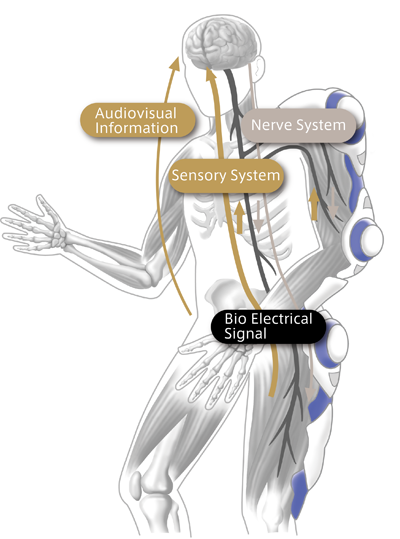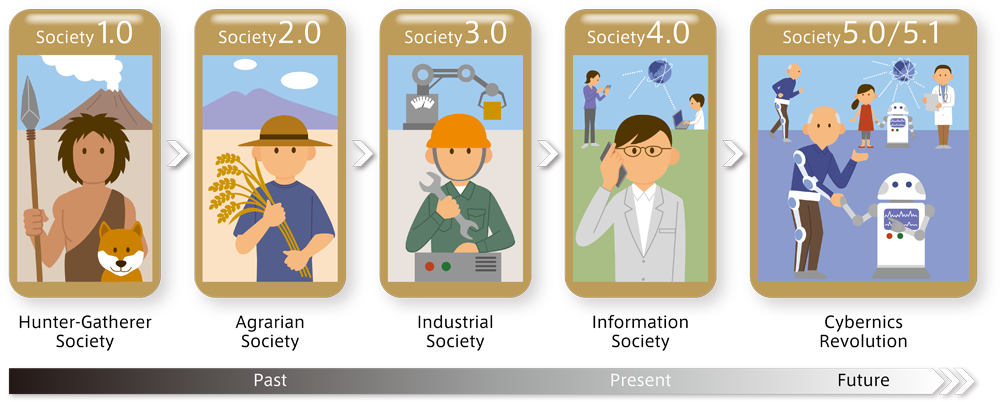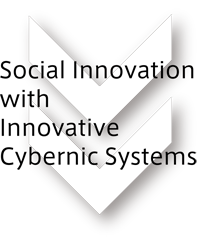
CybernicsMedical area
Archive

New
The cyborg type medical device for people who have disorders in the lower limb and people whose legs are weake …
CybernicsBasic area
Archive

New
Inventing and testing functional biomaterials for nerve regeneration and interfacing.
CybernicsApplication area
Archive

New
A standing mobility vehicle with passive exoskeleton assisting voluntary postural changes.
CybernicsSocial area
Archive

New
The author and editor : Prof.Masao Yanaga,University of Tsukuba “Robotics surgery and legal liability” written …


【HAL(Hybrid Assistive Limb)】
The cyborg-type robot HAL for Medical Use is one of cybernic systems developed of regenerating and improving patient’s brain-neuro-physical functions.By acting as the bridge between the brain and nerve system and the body, HAL establishes an interactive Bio Feedback (iBF) system, promoting the brain and nervous system to adapt and relearn, leading to the improvement and regeneration of physical functions.



Society 5.0/5.1 promoted by Cybernetics !

Japan is rapidly moving toward “Society 5.0”, adding a fifth chapter to the for major stage of human development: hunter-gatherer, agrarian, industrial and information.
Cybernics connects humans, robots and information functionally and establishes physical, informative and biological interaction. Utilizing Cybernics, Center for Cybernics Research pursues to establish a new vision of Society 5.1, where “human” is centered and combined with cyberspace (virtual world) and physical space (real world) of Society 5.0. CCR will continue to drive the movement to realize Society 5.1 as a future society where human and technology coexist.
CCR is the global leader in the field of human support technologies.
CCR will tackle and solve social issues via implementation of “innovative technology coexisting with people”, and will create a “New Industry” based on these solutions.
As a result, new pioneers with experience in this new design process will emerge from CCR. Moreover, CCR proposes a “Techno-Peer Support”, which is mutually supported by both humans and technology.














